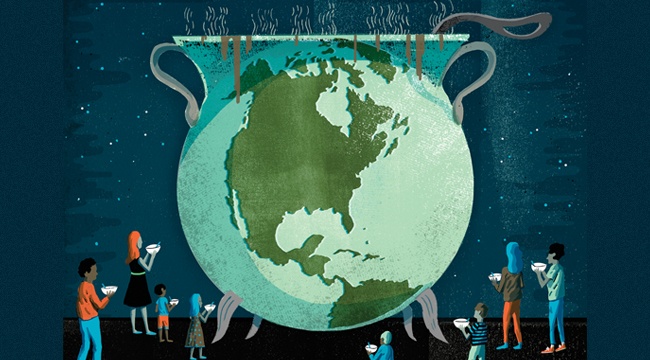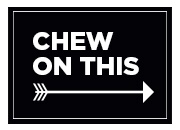
Devastated by Hurricane Katrina 10 years ago, an impoverished area of New Orleans provides an unforgettable lesson in the complexities of food insecurity and what’s being done to address why some people don’t have access to adequate, nutritious food.
Every Reading Week since 2011, a ucalgarycares Food & Justice program run by the Centre for Community-Engaged Learning has introduced student volunteers to New Orleans’ Lower 9th Ward. They get their hands dirty working on urban farms, meet food activists and visit schools where food education is a key part of the curriculum.
“It’s interesting to watch the growth of food initiatives since Katrina,” says Alycia Lauzon, BA’10. The driving force behind the Food & Justice program and now CCEL’s acting manager of service learning, Lauzon took students to Louisiana in 2013 and again this February.
“The Lower 9th Ward is very poor, mostly African-American, and only 20 per cent of the population has returned,” she says. “Many of its vacant lots have been turned into community gardens and the neighbourhood is being revitalized.”
Still, the community remains a “food desert,” meaning that a grocery store is miles away, requiring a difficult journey by public transit for the elderly, the housebound and moms with lots of kids and no car, she says. Otherwise, the only option is a convenience store selling fried and packaged food. Poverty, lack of education, racial conflict, urban design and natural disaster all play a role in the area’s food insecurity. Locally grown produce helps fill the gap.
Students often leave the Big Easy feeling “a bit shell-shocked,” says Lauzon. “Back in Calgary, they might think everything’s great here. One of the big things we do is help them contextualize: What does food insecurity look like in Calgary? Where are our food deserts? Why are post-secondary students here going hungry? And now that you’ve had this experience in New Orleans, what are you going to change in your community?”
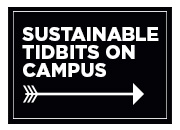
Food insecurity is very much present in our community — in First-World Canada, in affluent Calgary and on the UCalgary campus — say faculty, staff, students and alumni involved with the issue.
As the planet struggles to feed all of its 7 billion people now — a number that’s projected to rise to 8 billion by 2025, according to figures from the U.S. Census Bureau — food insecurity is increasingly top of mind, but it’s tricky to define.
Dawn Johnston, PhD’05, says food insecurity can take a number of forms, from people who don’t know where their next meal is coming from (due to insufficient income) and precarious food systems (think BSE), to natural disasters (parts of Calgary during the flood of 2013).
“Food insecurity can be environmental, economic, financial, social or cultural,” says Johnston, a senior instructor who teaches a
popular Food Culture course and is communications studies program coordinator in the
Department of Communications, Media and Film.
Many use the United Nations’ description: “Food security exists when all people, at all times, have physical, social and economic access to sufficient, safe and nutritious food which meets their dietary needs and food preferences for an active and healthy life.”
— United Nations
Dr. Lynn McIntyre, a professor in the Department of Community Health Sciences, Cumming School of Medicine, prefers a simpler definition. “Food insecurity is the lack of access to adequate food because of financial constraint,” she says.
A medical doctor, McIntyre has studied extreme hunger in Bangladesh but her current research is focused on food insecurity in lower- and middle-income Canadians. She was an investigator for an international team that reported nearly 13 per cent of Canadian households, or four million people, including 1.15 million children, experienced some degree of food insecurity in 2012.
Food insecurity exists on a continuum, ranging from marginal (worrying about running out of food) and moderate (compromising on the quality or quantity of food), to severe (missing meals or going for days without food).
The same report, Household food insecurity in Canada, 2012, found food insecurity was most prevalent in Nunavut, at 45.2 per cent in 2012. The lowest rate of food insecurity among the provinces was in Alberta, at 11.5 per cent.
Regardless of wealth, food insecurity exists everywhere. It is slightly more prevalent in urban areas than in rural parts of the country, says the report, which compared 33 metropolitan areas. Halifax fared the worst in the country, with nearly 20 per cent of households experiencing food insecurity. Sherbrooke had the lowest rate of food insecurity, at 8.6 per cent. Calgary ranked in the lower third of cities at 12 per cent; that was up significantly from eight per cent in 2008.
Chronic food insecurity is stressful, and that takes a toll on children’s physical and mental health, says McIntyre. Hungry kids are more likely to develop chronic illness such as asthma and depression and less likely to graduate from high school. But, if they do make it through Grade 12, her new research shows, “they’ll be like any other kid and no less likely to go to post-secondary.”
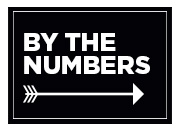
Ken Klatt, BSc’77, BComm’85, is a success story. The president and owner of Amaranth Whole Foods Inc.’s four stores in Alberta is celebrating his 20th anniversary in the health-food business. He defines food insecurity as, “not being able to get pure, whole foods anymore. This could either be from excessive soil contamination or genetically modified foods infiltrating the food system. [Soon,] the cost of real food will become too difficult to afford, which is already happening.”
Klatt experienced moderate food insecurity as a young boy, when his family moved from Northern Alberta to Drumheller. “I have clear memories ... of my mother getting food money only once a month. When that money ran out, we would eat oatmeal with powered milk for all three meals,” he says. “I do realize this shortage was not due to a shortage of food, rather to a shortage of funds to purchase food.”
Many on the UCalgary campus are all too familiar with a shortage of funds to purchase food. Demand is rising at the Student Union’s Campus Food Bank, which provides seven-day emergency food relief to students, staff, faculty and alumni up to two years after graduating. “We’ve been giving out a lot of hampers this year,” says Amy Milton, science student and co-coordinator of the SU Campus Food Bank. It fed 402 people in the 2012/2013 school year, 448 in 2013/14 and is projected to feed 630 people this year. Most are students. (See sidebars, below.)
Students today increasingly face “huge financial constraints,” and, therefore, huge food insecurity, says Dr. McIntyre. “It’s not conducive for people to succeed at school. And it could be cured by a bursary system and affordable post-secondary education.”
In her work to change public policy surrounding food insecurity, she wants, “to put food banks out of business” with a guaranteed annual income for all Canadians, a universal entitlement similar to what senior citizens receive.
“A guaranteed annual income is really the solution,” McIntyre says. “People need income, not food.”
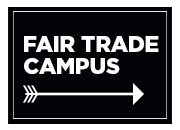
Alumnus Scott Weir, BA’14, is also exploring solutions to the broader issues of food insecurity. His fascination with food issues began with growing hydroponic vegetables in junior high (“I grew a pumpkin in my room”), and he spearheaded composting programs in his hometown of Leduc and later at UCalgary’s Mac Hall.
A trip to New Orleans in 2013 with the Food & Justice program inspired him to start an urban farm and he spent a “long, hard year” cultivating an acre of land owned by a local restaurateur in Calgary’s northwest. One of his ongoing passions is aquaponics, a symbiotic agricultural system in which live fish supply fertilizer to nourish crops that, in turn, filter water for the fish. He plans to make it a commercial venture.
Weir is currently director of programs and services for the Parkdale Community Association where he helps with its farmers’ market, community gardens and distribution of a weekly fresh-food box. He points out that, even in wealthy Parkdale, food insecurity exists among housebound seniors and some low-income folks. Like many areas of Calgary, it’s hard to get to the grocery store without a car and, by some definitions, it could be considered a food desert.
“New Orleans has very obvious forms of food insecurity,” says Weir, who won the UCalgary Future Alumni Award in 2013 for his achievements in aquaponics and sustainability. “In Canada, ours are hidden, which in some ways is worse. There are a lot of problems hiding right in front of us.” U













